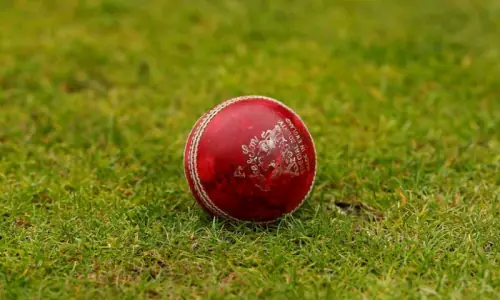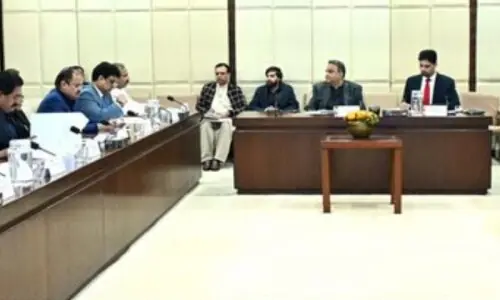
Last year was the year of sequels. But whereas in Hollywood, it is films that spawn forth their second parts, in Pakistan it is the hyper active television industry that decided to go forth and reproduce.
Various television channels aired Annie Ki Aayegi Baraat (Geo), Mera Saeein 2 (ARY Digital) and Tanhaiyan Naye Silsilay (PTV Home and ARY Digital) - sequels to their hugely successful originals respectively, Azar Ki Ayegi Baraat, Mera Saeein and Tanhaiyan.
The sequels managed to attract viewers but were not all of them were as big as their predecessors and the post-mortems are still being conducted as to what was right and what went wrong.
Mera Saeein, a serial loosely inspired by Tehmina Durrani’s My Feudal Lord, focused on the evil shenanigans of feudal-politician Malik Wajahat who takes one wife after another in a bid to acquire a male heir. It was broadcast in 2011. Even though the serial was not flattering about politicians or women it was a major success.
Critics feel this was due to good, solid performances by veteran actor Nauman Ejaz and a strong storyline. But sadly, the sequel did not boast of a strong cast or a strong enough script.
“The original Mera Saeein had a fantastic cast of Noman Aijaz and Savera Nadeem,” says Faraz Qadri, an avid TV viewer who blogs at DramaPakistani, adding that “Fahad Mustafa in the sequel looked too young to carry off the part of a self-centred and ruthless politician.”
MS 2 focused on Malik Shazaman, the son of Malik Wajahat, a beastly creature who tortures women and victimises other helpless people. But without the originality of the first, the sequel also had too many characters and confusing twists and turns.
Ratings provided by Medialogic, a TV ratings agency, lend credence to what Qadri says.
Ranging from 3 to 3.6 for the original, the TRPs dropped to 1.4 to 2.7 for the sequel.
“In terms of content and expectation MS 2 did not live up to its original because viewer expectation was very high,” explains Jerjees Seja, Chief Executive of ARY Network.
But perhaps disappointing as MS 2 was, it did not generate the kind of feedback and talk that Tanhaiyan Naye Silsilay (TNS) did.
The sequel, which wrapped up on January 19, has generated viewer feedback that ranged from scathing to fulsome praise.
The original Tanhaiyan was created 27 years ago, penned by Hasina Moin, and directed by Shahzad Khalil.
The serial, which by now has acquired cult status, focused on two sisters Zara and Saniya who struggle to come to terms with life after the sudden demise of their parents.
The eldest, Zara, strives to attain material success and in that pursuit alienates her loved ones while the younger sister Saniya continues to be the mischievous, loveable brat she was before her parents died. Tanhaiyan’s characters such as Asif Raza Mir as Zain, Shehnaz Sheikh as Zara and Marina Khan as Saniya were the rage in their time – several children born around that time were named after the screen characters.
In fact, according to Jaleel Akhtar, the producer of TNS, Engro-Olpers asked a focus group what classic drama’s remake they wanted to watch. The vote was unanimous - Tanhaiyan. Perhaps inspired by these findings, TNS was born.
The story moves forward with Zain and Zara’s daughters Zeenia and Serinia visiting Pakistan and their relationships even though the sequel draws heavily on the comic chemistry (or lack thereof) of Saniya and Qabacha which was very popular in the original serial. Sadly, the much older and not-so-wise Saniya and Qabacha appear ridiculous rather than funny and entertaining.
On the show’s Facebook page, Seema Faraz, a television viewer, left the comment: “It wasn’t captivating at all… I don’t want to see my favourite drama memories spoiled by the sequel.”
On the other hand Huma Ahmar said that she and her kids waited for the new episode every Saturday.
Producer Akhtar claims that TNS received a good response. “We could have never matched the original since back then there was only TV channel then (the original aired on PTV). And for the most part TNS was competing with the Turkish soap Ishq-e-Memnu, which has been a huge hit in Pakistansays Akhtar, implying that the Turkish play was also a reason for the low ratings of TNS.
Seja of Ary explains that making a sequel especially of a classic is akin to getting caught between the devil and the deep blue sea – because it is difficult to assess the likelihood of viewers liking it.
According to Akhtar taking on the classic was a daunting prospect but he and Marina Khan, the main lead and director of the serial, took the plunge because they found the idea exciting.
“Since nobody else was doing something like this we jumped at it,” says Akhtar.
However, unlike TNS and MS 2, the one series that has given birth to more than one sequel and found tremendous success is the Ayegi Baraat series on Geo.
In fact, some critics point out that Ayegi Baraat is similar to American television where successful television shows have seasons - each season runs for around 26 episodes and then the series returns with a new season after a break.
The Ayegi Baraat too seems to have a similar pattern. A storyline involving the same characters is taken to its conclusion (usually the romance and marriage of a character) and then after a break the same set of characters (with a few changes) returns with a new storyline (a new romance) which ends in marriage after love lost and found and some hilarious twists and turns Pakistani style.
Hence first came Azar Ki Ayegi Baraat - shown on Geo 2009 - that was followed by Dolly Ki Ayegi Baraat(DKAB) in 2010, Takkay Ki Ayegi Baraat in 2011 and Annie Ki Ayegi Baraat in 2012. Vasay Chaudhry, the writer of the last three Ayegi Baraats, attributes DKAB’s huge success to the fact in the preceding two years comedy had taken a backseat and the dramas being aired during prime time were intense.
“There was a lot of rona dhona in the dramas during 2008-2009. So when DKAB was shown, it was a hit,” says Chaudhry.
Some industry insiders also credit the character of Saima Chaudhry, the Faisalabadi fashion designer, played with great élan by the multi-talented Bushra Ansari for the success of the series. “Ansari’s episodes received higher TRPs,” says an insider.
Chaudhry partially agrees with this assessment, adding that her character’s success was by default and not by design. “In Azar Ki Ayegi Baraat, Saima Chaudhry was a supporting character. But in DKAB, because the serial centered on her daughter’s wedding, she had more scenes,” says Chaudhry.
However, it is important to note that apart from creative satisfaction, sequels are also more profitable as channels and advertisers are willing to pay well for a ‘brand’ that has already proven its success.
Chaudhry says, “You get a bigger budget the next time around. For instance Annie Ki Ayegi Baraat was the biggest TV production in terms of its multi-star cast - the last episode had 20 stock actors.” Akhtar provides similar reasons for doing TNS, adding that “Everything is set up logistically for the drama and you don’t have to create a brand new one.”
Chaudhry told Dawn that PTV is making the third sequel to Anokha Ladla, their award-winning serial while ARY network is working on a sequel of their successful Kala Jadoo.
However, Seja does strike a note of caution, pointing out that sequels are more suited for movies than TV. “In TV the episodes go on for weeks and the viewer may watch the first one out of curiosity but not the rest if the sequel is not good. But if Dabangg 2 or Die Hard 5 hits the screens, the viewer will catch it and for cinemas the one-time viewing proves sufficient.”
This is why he does not see the sequels turning into a huge hit.
But until his prediction turns true, television viewers can wait for the next Baraat to arrive as well as the Ladla and Kala Jadoo to return.

































